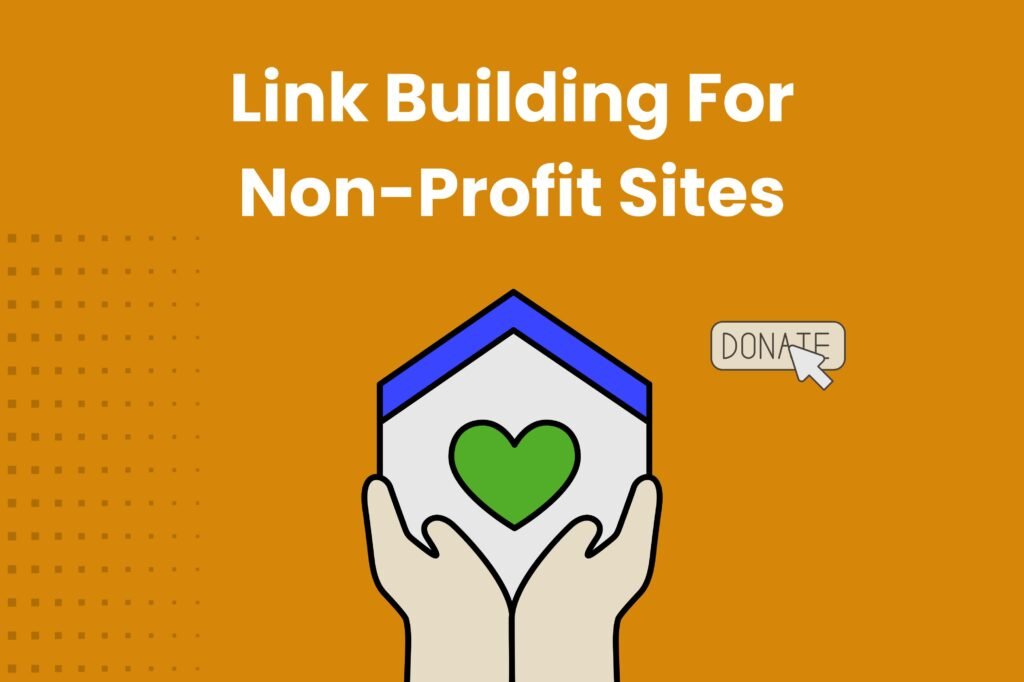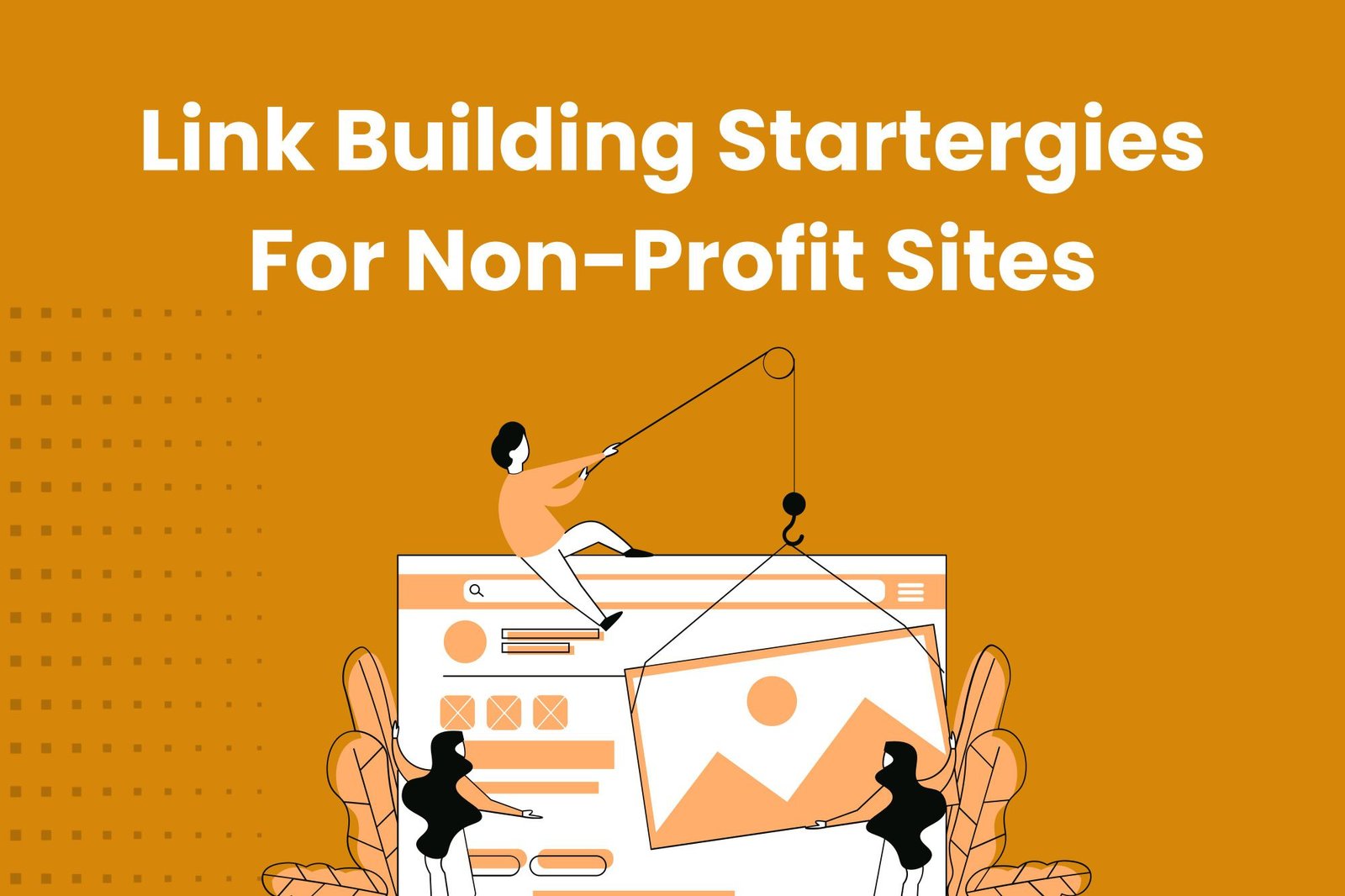
Link building is a crucial aspect of search engine optimization (SEO) that can significantly enhance the online visibility and reach of any website, including those operated by non-profit organizations. In the digital age, where competition for attention is fierce, non-profit sites must employ effective strategies to ensure their message reaches the right audience. Unlike commercial entities, non-profits often operate with limited budgets and resources, making it essential to adopt cost-effective and impactful SEO practices. This is where link building comes into play.
Link building involves acquiring hyperlinks from other websites to your own, serving as a vote of confidence in the eyes of search engines like Google. These links are not just pathways for users to navigate the web; they are also critical signals that search engines use to determine the authority and relevance of a website. For non-profit organizations, building a robust link profile can lead to higher search engine rankings, increased organic traffic, and greater awareness of their cause.
However, link building for non-profit sites presents unique challenges and opportunities. Non-profits often have compelling stories and missions that can naturally attract attention and engagement. By leveraging these narratives, non-profits can create content that resonates with their audience and encourages other sites to link back to them. Additionally, partnerships with other organizations, participation in community events, and collaborations with influencers can provide valuable link-building opportunities.
In this article, we will explore effective link-building strategies tailored specifically for non-profit websites. We will discuss how to identify potential link opportunities, create link-worthy content, and build relationships with other organizations and influencers. Furthermore, we will highlight the importance of ethical link-building practices and how non-profits can avoid common pitfalls. By implementing these strategies, non-profit organizations can enhance their online presence, attract more supporters, and ultimately further their mission. Whether you are a seasoned digital marketer or new to the world of SEO, this guide will provide valuable insights to help your non-profit site thrive in the digital landscape.
Why is Link Building For Non-Profit Sites Important?
Enhances Online Visibility
For non-profit organizations, visibility is crucial to reach a broader audience and attract potential donors, volunteers, and supporters. Effective link building helps improve your website’s search engine rankings, making it easier for people to discover your cause online.
Builds Credibility and Authority
Links from reputable websites serve as endorsements for your non-profit site. When authoritative organizations or related sites link to your content, it signals to search engines that your site is trustworthy and valuable, boosting your credibility in the digital space.
Increases Website Traffic
Quality backlinks direct targeted traffic to your website. Visitors coming from relevant external sites are more likely to be interested in your mission, programs, or donation opportunities, leading to higher engagement and support.
Supports Fundraising and Campaigns
Link building can amplify your fundraising efforts by promoting specific campaigns or events through strategic partnerships. When your campaign pages are linked from high-authority sites, they gain more exposure, increasing the chances of donations and participation.
Cost-Effective Marketing Strategy
Compared to paid advertising, link building is a cost-effective way to improve your online presence. Building organic backlinks requires effort and strategic outreach but can yield long-term benefits without ongoing advertising costs.
Strengthens Community Relationships
Engaging with other organizations, local businesses, and community groups through link building fosters partnerships. These relationships can lead to collaborative projects, shared resources, and mutual support, further advancing your non-profit’s mission.
Improves Search Engine Rankings
Search engines prioritize websites with strong backlink profiles. By acquiring links from relevant, authoritative sources, your site can climb higher in search results, making it more accessible to those seeking your services or information.
Supports Content Marketing Efforts
Creating valuable, shareable content such as blog posts, infographics, or success stories encourages other sites to link to your content naturally. This not only boosts your SEO but also spreads awareness about your cause.
Encourages Engagement and Community Building
Link building often involves outreach and relationship-building, which can foster a sense of community around your organization. Engaged supporters are more likely to share your content and advocate for your cause.
Key Takeaways for Non-Profit Link Building
- Focus on earning links from reputable and relevant sites.
- Create high-quality, shareable content to attract backlinks organically.
- Build relationships with other organizations and community partners.
- Utilize outreach strategies such as guest blogging and partnerships.
- Monitor your backlink profile regularly to maintain a healthy link profile.
Top Strategies For Link Building For Non-Profit Sites
 Building high-quality backlinks is essential for increasing the visibility and authority of non-profit websites. Effective link building not only boosts search engine rankings but also helps attract more supporters, donors, and volunteers. Here are some proven strategies tailored specifically for non-profit organizations to enhance their link-building efforts.
Building high-quality backlinks is essential for increasing the visibility and authority of non-profit websites. Effective link building not only boosts search engine rankings but also helps attract more supporters, donors, and volunteers. Here are some proven strategies tailored specifically for non-profit organizations to enhance their link-building efforts.
1. Leverage Partnerships with Other Organizations
Forming strategic alliances can be a powerful way to earn valuable backlinks while expanding your network.
• Collaborate on Content : Co-create blog posts, research reports, or event pages with partner organizations.
• Guest Posting Opportunities : Offer guest articles to related nonprofits or community blogs that share your mission.
• Event Sponsorships & Listings : Sponsor local events or initiatives and ensure they include links back to your site in promotional materials.
This approach fosters mutual support and provides authoritative links from reputable sources within your niche.
2. Create Shareable Quality Content
Content remains king when it comes to earning organic backlinks—especially if it’s engaging, informative, and relevant.
• Success Stories & Case Studies : Showcase real-life impact stories that inspire others.
• Resource Guides & Toolkits : Develop comprehensive resources useful for other NGOs or community members.
Infographics & Visual Data Representations :
• Present data visually; these tend to get shared widely across social media platforms and blogs.
Encourage sharing by making content easy-to-share through embed codes or social sharing buttons which naturally lead others back to you via inbound links.
3. Engage With Local Media And Community Outlets
Local newspapers, radio stations, bloggers—and even online forums—are excellent avenues for gaining exposure as well as backlinks:
• Reach out with press releases about upcoming campaigns,
• Pitch story ideas highlighting impactful projects,
• Participate actively in community discussions where linking back makes sense,
These activities help position your organization as an active contributor locally while generating credible external links pointing toward your website.
4. Utilize Directory Listings And Niche-Specific Platforms
Many directories cater specifically towards charities/non-profits:
• Register on national charity directories like GuideStar
• List yourself on local business/organization listings such as Chamber of Commerce sites
• Submit profiles into specialized nonprofit aggregators
Ensure all information is accurate — consistent Name / Address / Phone (NAP) details boost SEO credibility—and seek opportunities where directory editors allow clickable URLs leading directly back home.
5. Encourage Supporters To Link Back To Your Site
Your existing supporter base can become ambassadors who generate quality inbound links organically:
• Ask loyal donors/employees/volunteers if they’d feature testimonials linked directly from their personal/professional websites
• Promote user-generated content campaigns encouraging supporters’ stories/sharing experiences
• Include “Link Us” badges/buttons easily accessible on resource pages
Providing simple ways for people passionate about causes you serve increases chances they’ll promote you online naturally.
Influencer outreach isn’t just reserved for commercial brands—it’s equally effective here too:
• Identify influential bloggers/vloggers aligned with charitable themes;
• Personalize pitches explaining how collaboration benefits both parties;
• Offer exclusive interviews , behind-the-scenes looks at programs ;
Such collaborations often result in mentions/link placements that significantly improve domain authority over time.
By implementing these targeted strategies thoughtfully—with emphasis on authenticity—the backlink profile of a non-profit website will grow stronger steadily without resorting solelyto manipulative tactics.. This sustainable approach ensures long-term visibility growthand increased trustworthiness among audiences searchingfor meaningful causes online
Measuring & Analyzing Link Building For Non-Profit Sites Success
Effective link building is essential for increasing the visibility and authority of non-profit websites. However, to ensure your efforts are paying off, it’s crucial to measure and analyze your link-building success accurately. This section provides a comprehensive guide on how to evaluate your progress.
Key Metrics to Track in Link Building Campaigns
Understanding which data points matter most helps you gauge whether your outreach efforts are effective or need adjustment. The primary metrics include:
• Backlink Quantity: The total number of backlinks acquired over time indicates growth. But don’t focus on this alone.
• Referring Domains: The number of unique domains linking to your site. A diverse set of sources strengthens your domain authority and credibility.
• Domain Authority (DA) / Domain Rating (DR): These scores (from Moz, Ahrefs, etc.) reflect your site’s strength based on backlink quality.
• Page Authority (PA): Measures the ranking potential of specific pages receiving backlinks.
• Follow vs. Nofollow Links: Follow links pass SEO value (link juice). Tracking the ratio helps you balance efforts and avoid unnatural link patterns.
Monitoring these indicators regularly provides insight into the health and effectiveness of your link profile.
Tools and Techniques for Monitoring Progress
SEO Analytics Platforms
These platforms help you track backlink origins, anchor text, lost vs. gained links, and keyword rankings:
• Google Search Console
• Ahrefs
• SEMrush
• Moz Pro
• They offer deep insights into link profile changes over time.
Manual Checks
It’s a good idea to perform periodic manual audits. Visit high-value referring sites to verify that links remain active and relevant. Browser extensions like Check My Links can help validate links quickly during outreach.
Setting Up Regular Reporting
Establish routine reporting—weekly or monthly—to measure progress. Use custom dashboards that combine metrics (e.g., in Google Looker Studio) so you can spot trends at a glance.
Interpreting Data to Assess Effectiveness
Raw numbers alone don’t tell the whole story. Here’s how to interpret them meaningfully:
• Growth Trends: Are new backlinks increasing steadily? This shows your outreach is working.
• Link Quality vs. Quantity: A few high-authority links from trusted sources are more valuable than dozens of low-quality links.
• Relevance: Are your backlinks coming from related fields? For non-profits, links from mission-aligned sites (education, health, environment, community) boost credibility.
• Citations from Trusted Sources: Mentions in authoritative media or government domains (.gov) enhance your trustworthiness significantly.
Tweaking Strategies Based on Insights
Your data should guide future actions. For example:
• If backlink acquisition stalls: Diversify your target sources and improve your outreach pitch to appeal to higher-authority sites.
• If you’re getting too many nofollow links: Increase efforts on guest posting or collaborative content that earns follow links.
• If referral traffic is low despite links: Focus on partners and platforms that actively promote your shared content.
The Role of Conversion Tracking in Measuring Impact
SEO metrics reveal your technical progress, but conversions show real-world success. For non-profits, this could mean:
• Donations made via landing pages linked from partnerships
• Newsletter sign-ups after clicking external resources
• Volunteer sign-ups driven by awareness campaigns
Set up UTM parameters and custom conversions in Google Analytics (GA4) so you can tie these actions directly to specific link-building efforts.
Common Mistakes to Avoid While Link Building for Non-Profit Sites
Let’s break down some of the most common pitfalls—and how to avoid them.
1️⃣ Pursuing Low-Quality or Irrelevant Links
A tempting mistake is to chase easy links from spammy directories or unrelated sites. These links won’t help—and may hurt—your rankings.
✅ What to do instead: Focus on earning backlinks from reputable sources within your niche, like educational institutions, media outlets, or other non-profits.
2️⃣ Ignoring Relevance and Context
Google looks at whether the sites linking to you are related to your mission. Links from unrelated industries can look unnatural.
✅ What to do instead: Build relationships with relevant blogs, non-profits, educational sites, and industry publications. Guest post where it makes sense contextually.
3️⃣ Focusing on Quantity Over Quality
More backlinks don’t always mean better rankings. A handful of meaningful, high-authority links far outweigh dozens of low-value ones.
✅ What to do instead: Prioritize genuine partnerships and placements on respected platforms, even if that means slower growth.
4️⃣ Sending Generic Outreach Messages
Mass email templates with no personalization get ignored—and damage your reputation.
✅ What to do instead: Tailor your pitch. Show you’ve done your homework and explain how collaboration benefits both parties.
5️⃣ Failing to Track or Measure Results
If you’re not analyzing your backlink profile and results, you won’t know what’s working (or not).
✅ What to do instead: Use tools like Google Search Console, Ahrefs, or SEMrush. Review reports regularly and adjust your strategy based on data.
Bonus Link Building Strategies for Non-Profits
Here are some creative ways to build links ethically and effectively:
Leverage storytelling: Share impactful stories about your work that journalists and bloggers will want to link to.
Create valuable resources:
Publish guides, research reports, or toolkits others can reference.
Host webinars or events:
These often attract coverage and backlinks.
Partner with local businesses or government programs:
Co-author content or collaborate on initiatives.
FAQs
What is the importance of link building for non-profit websites?
Link building helps non-profit sites improve search rankings, reach wider audiences, and establish authority. Strong backlinks signal trust to search engines, making it easier for supporters to find you.
How can non-profits ethically acquire backlinks without penalties?
Focus on authentic relationships, creating valuable content others want to cite, and participating in community initiatives. Avoid shortcuts like buying links or link exchanges.
What types of sites offer the most valuable backlinks for non-profits?
Aim for links from educational institutions, government sites, local news outlets, industry directories, and mission-aligned blogs or media.
Does social media sharing help link building?
Social shares don’t count as backlinks, but they increase content visibility. This, in turn, can lead to natural backlinks when others discover and cite your material.
How long does it take to see link-building results?
It usually takes 2-6 months to see significant improvements in rankings and traffic, depending on competition and link quality.
How can storytelling improve link building?
Engaging stories of your non-profit’s impact inspire others to link to your site—whether journalists writing about your work or partners amplifying your mission.
How can I measure if link building is truly helping?
Track conversions like donations, sign-ups, or volunteer applications linked to external backlinks using Google Analytics, UTM parameters, and custom events.
What’s better: follow or nofollow links?
Follow links pass SEO value directly. Nofollow links don’t, but they can drive traffic and build brand visibility. A natural mix is ideal.
Conclusion
Link building for non-profits is more than just an SEO tactic—it’s a way to amplify your mission, connect with like-minded organizations, and build lasting authority online. By focusing on quality over quantity, ethical practices, and data-driven decisions, you can create a link profile that not only helps your rankings but supports your broader goals of positive impact.
If you’d like, I can format this in HTML, create a table of contents, or help with SEO meta descriptions and titles for publishing. Let me know!
